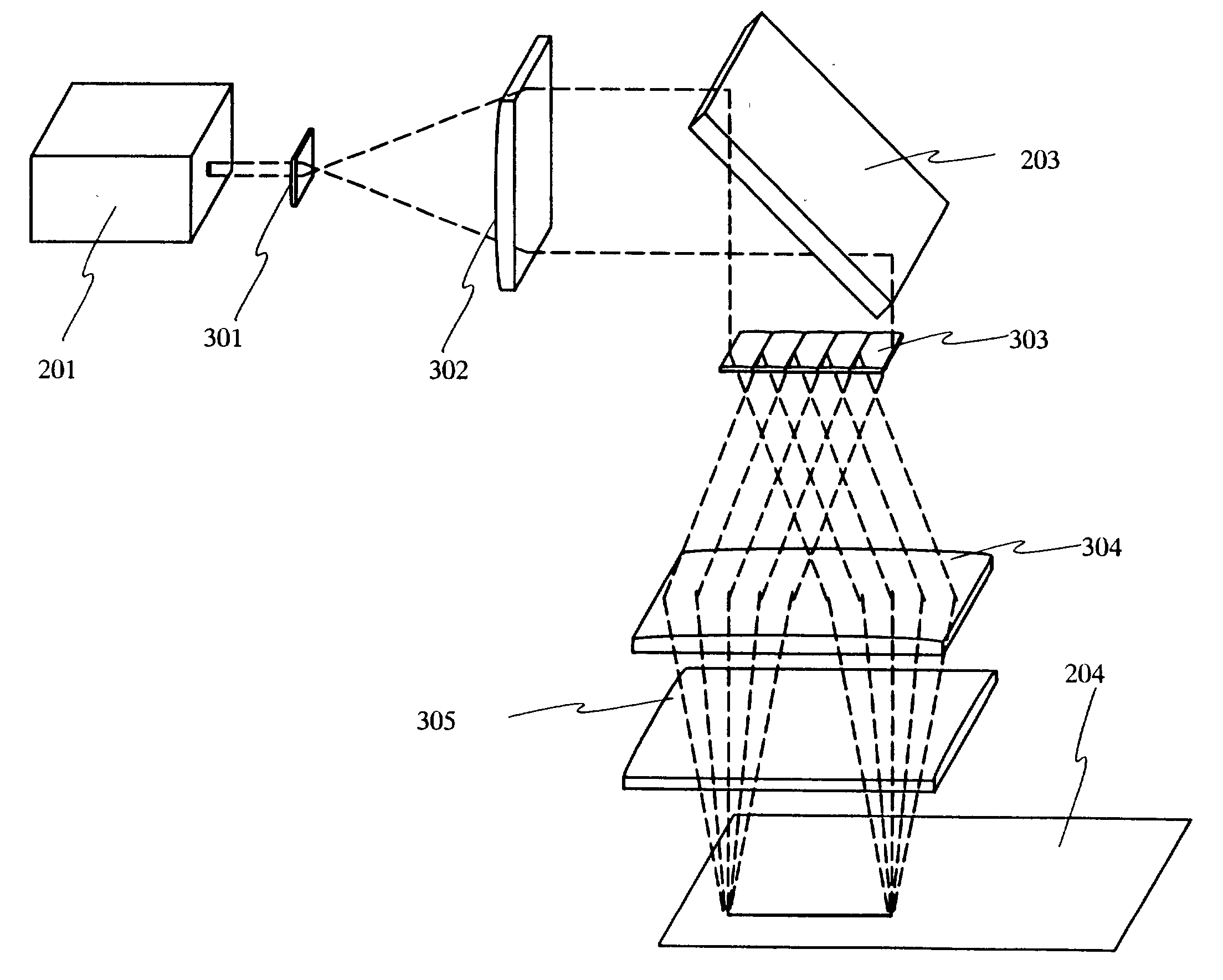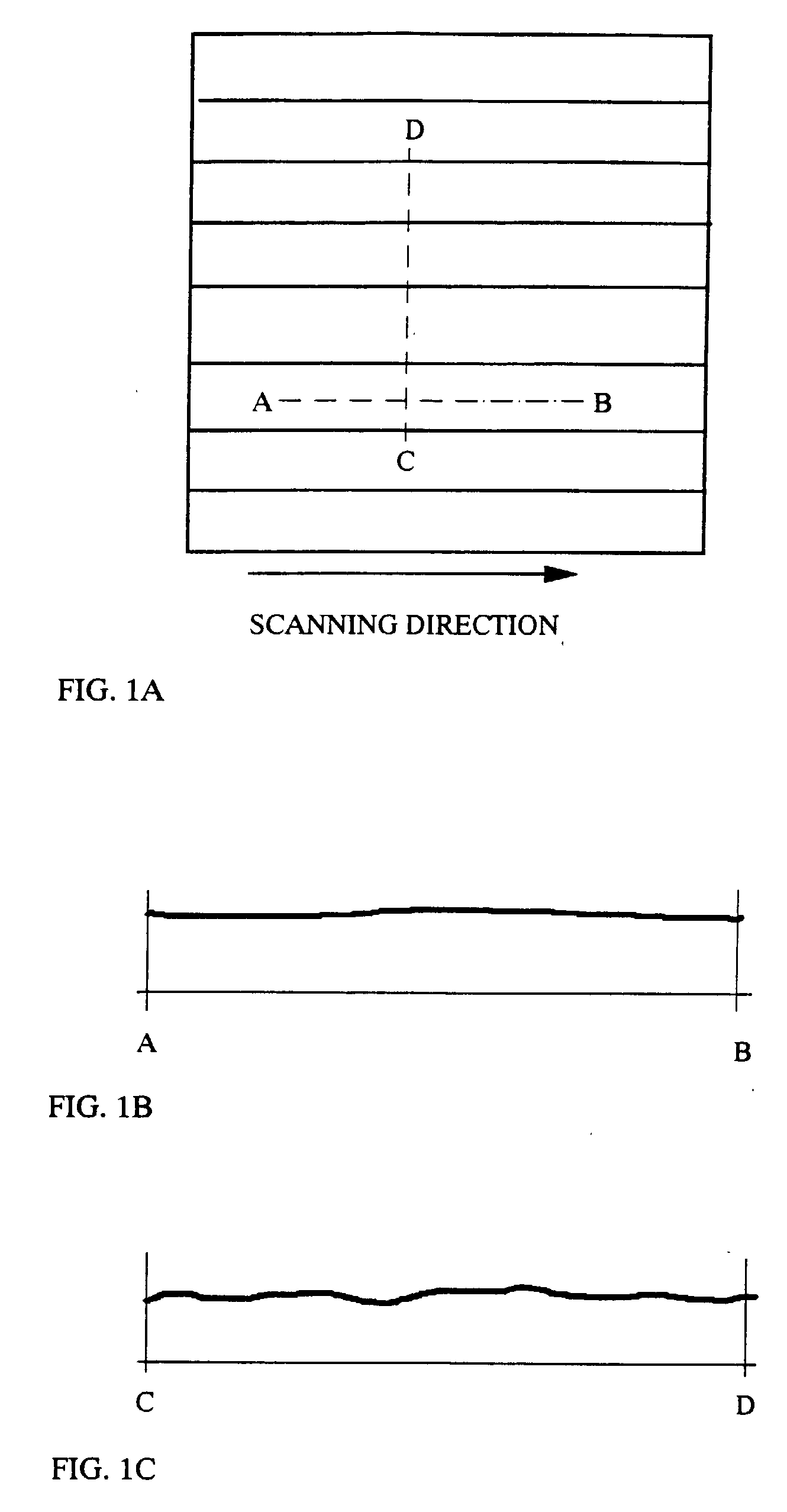Laser irradiation method, laser irradiation apparatus, and semiconductor device
a laser irradiation and laser irradiation technology, applied in the direction of photomechanical equipment, instruments, active medium materials, etc., can solve the problems of insufficient crystallinity of semiconductor film irradiated with this region, drawbacks where these stipes appear on the screen, and poor crystallinity of semiconductor film
- Summary
- Abstract
- Description
- Claims
- Application Information
AI Technical Summary
Problems solved by technology
Method used
Image
Examples
embodiment 1
[0075] The calculation method of the relationship between the laser power and the maximum spot size, estimated in the above embodiment mode of the present invention, is shown here.
[0076] The amorphous silicon film formed on the above substrate is taken as a model. The thermal conductivities of the silicon oxide film and the amorphous silicon film are taken as 0.02 W / cm.multidot.K and 0.2 W / cm.multidot.K, respectively, from room temperature to 1200.degree. C. (the temperature assumed to be the melting point of the amorphous silicon film used throughout this specification). The thermal conductivity in the range beyond the melting point temperature of the amorphous silicon film is taken as 2 W / cm.multidot.K.
[0077] The temperature limitations of each of the films during laser crystallization of the amorphous silicon film are as below.
[0078] The glass substrate can be heated up to a maximum of 600.degree. C. without any change in shape (the distortion temperature of Corning 1737 is above...
embodiment 2
[0094] The spot size calculated in embodiment 1 above is very small, so it is difficult to use for mass production. An example of increasing the laser beam size by a great jump through use of a high distortion point temperature quartz substrate as a substrate is shown, then, in embodiment 2. A quartz substrate does not change in shape, or in quality, at all when heated to the melting point of a silicon film. Therefore, the beam size can be made wider. The irradiation object in embodiment 2 is the substrate having a silicon film formed thereover shown in the embodiment mode of the present invention, where the glass substrate is replaced with a 1.1 mm thick quartz substrate.
[0095] An example using a 1000 W continuous emission excimer laser processed into a linear beam shape (with a size of 125 mm.times.0.4 mm) is shown in embodiment 2. The means of processing the laser into a linear beam shape is shown in FIG. 8.
[0096] The device shown in FIG. 8 possesses a function of irradiating as ...
embodiment 3
[0118] Embodiment 3 shows a process of crystallizing a silicon film formed on a glass substrate using a 1000 W continuous emission excimer laser with the same specifications as that of embodiment 2. An example is shown in which the extreme surface of the glass substrate melts by the crystallization process of embodiment 3, so a base film is made rather thick in order to prevent contamination of the silicon film.
[0119] First, a 125.times.125.times.0.7 mm glass substrate (Corning 1737) is prepared as a substrate. This substrate has sufficient durability up to a temperature of 600.degree. C. A 400 nm silicon oxide film is deposited on the glass substrate as a base film. In addition. a 55 nm thick amorphous silicon film is deposited on top. Sputtering is used for both film depositions. Alternately, film deposition may also be performed by plasma CVD.
[0120] The substrate, on which the above films have been deposited, is then exposed to a hot bath at 450.degree. C. for 1 hour. This proces...
PUM
| Property | Measurement | Unit |
|---|---|---|
| length | aaaaa | aaaaa |
| half line width | aaaaa | aaaaa |
| thickness | aaaaa | aaaaa |
Abstract
Description
Claims
Application Information
 Login to View More
Login to View More - R&D
- Intellectual Property
- Life Sciences
- Materials
- Tech Scout
- Unparalleled Data Quality
- Higher Quality Content
- 60% Fewer Hallucinations
Browse by: Latest US Patents, China's latest patents, Technical Efficacy Thesaurus, Application Domain, Technology Topic, Popular Technical Reports.
© 2025 PatSnap. All rights reserved.Legal|Privacy policy|Modern Slavery Act Transparency Statement|Sitemap|About US| Contact US: help@patsnap.com



